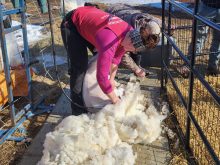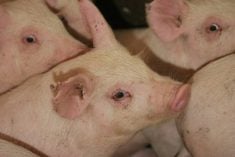In the new world of beef, Canadians next worry should be the growth of the Brazilian cattle industry.
“There are two big questions: Where is the ceiling and when will fresh Brazilian beef come into North American markets?” said Eduardo Blasina before more than 450 people at the international livestock congress July 15 in Calgary.
Blasina owns a market analysis firm based in Montevideo, Uruguay, where his company focuses on meat, wool and grain markets.
Brazil, Paraguay, Argentina and Uruguay collectively known as Mercosur beef, raise 242 million head or 16 times more cattle than Canada. Those countries are members of the Mercosur trading block, which consists of South American countries.
Read Also

Charges laid after cattle theft
Saskatchewan RCMP lay two charges against a man after six cattle went missing.
Brazil hopes to crack the North America free trade area with fresh beef by 2008 even if national beef organizations protest.
If it is successful and better cattle prices result, Brazilian farmers will step up production.
“I don’t know how you will stop Brazilian beef. I don’t think the NCBA (National Cattlemen’s Beef Association) will support Brazilian beef in the U.S.,” Blasina said.
Several things have happened to spur on the beef industry.
The currency has devalued without inflation, there have been no BSE discoveries and a discovery is deemed less likely because most cattle are grass fed and meat and bone meal are not used. As well, a tremendous expansion in corn and soybeans has provided plenty of cheap feed and new technology helps produce beef in hot climates.
While problems with foot-and-mouth disease continue, especially for Argentina, there is growing demand for South American beef in Russia, parts of Europe, the Middle East and Asia.
European imports are increasing because there is a beef shortage there. Brazil, Argentina and Uruguay can fill the gap with beef free of growth hormones and BSE at a competitive price.
A new crop for the northern part of the continent is elephant grass for grazing. The land is relatively cheap, there is a good market for the wood and farming can be profitable but there remain environmental concerns over clearing the land for grazing and cropland.
As well, beef quality is improving with better breeding animals rather than relying on Indian type breeds capable of withstanding heat and insect pests.
Cost of production is another advantage.
Paraguay can produce beef the cheapest of the four but it has sanitation problems. Uruguay is highly competitive and producers there receive the highest prices at about $1.80 US per kg while Brazilian producers can generally earn 75 cents per kg. for a fat steer.
These countries are also moving toward reliable animal health tracking systems.
However, some challenges remain. All four countries need a reliable trucking system as well as political and economic stability.
“Political differences interfere with commerce,” said Blasina.

















